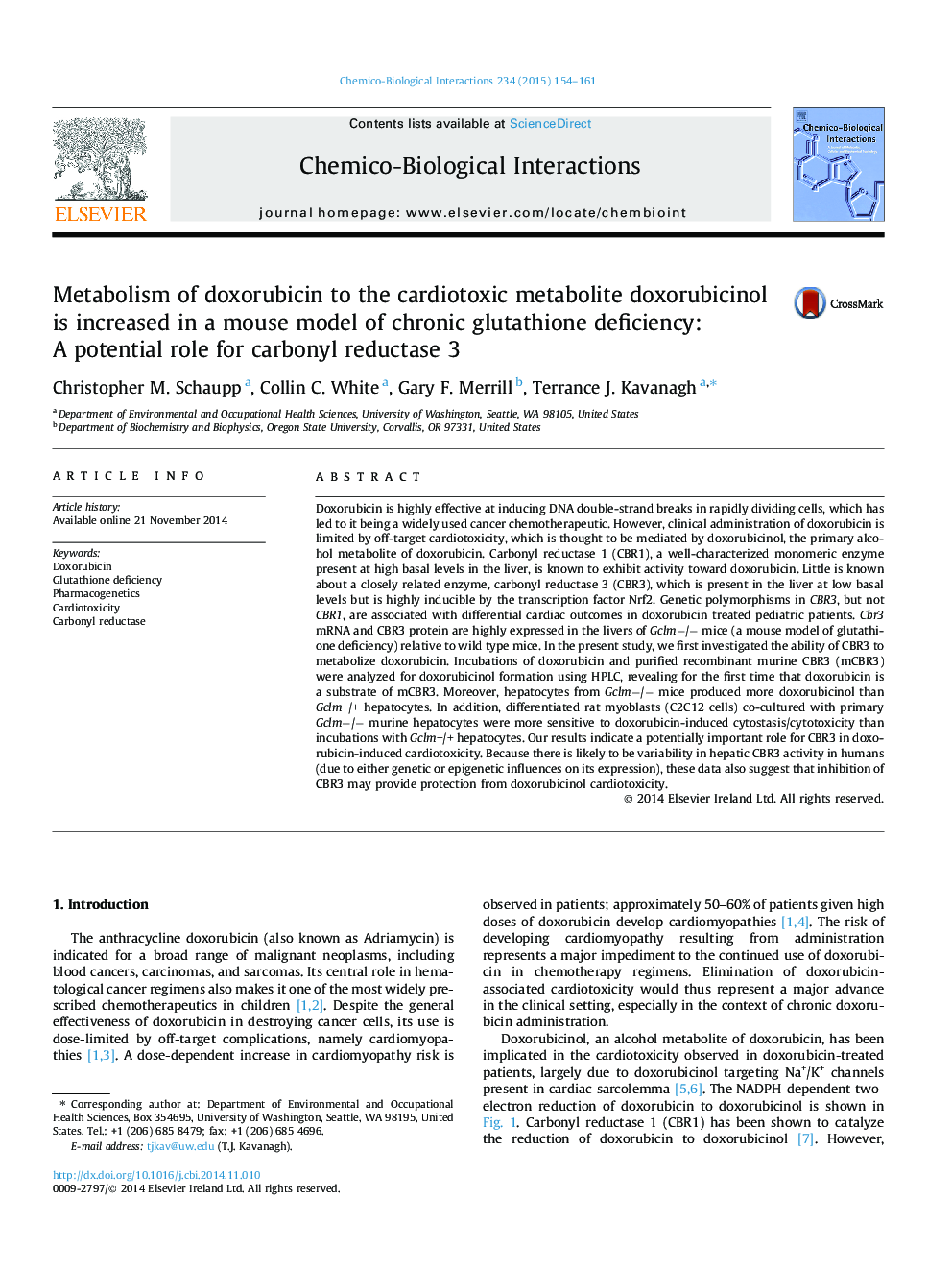| کد مقاله | کد نشریه | سال انتشار | مقاله انگلیسی | نسخه تمام متن |
|---|---|---|---|---|
| 2580232 | 1561607 | 2015 | 8 صفحه PDF | دانلود رایگان |
• Doxorubicin is a substrate of murine Cbr3.
• Gclm−/− hepatocytes express higher levels of Cbr3 than Gclm+/+ hepatocytes.
• More doxorubicinol is made by Gclm−/− hepatocytes than Gclm+/+ hepatocytes.
• Gclm−/− hepatocytes sensitize co-cultured C2C12 cells to doxorubicin toxicity.
Doxorubicin is highly effective at inducing DNA double-strand breaks in rapidly dividing cells, which has led to it being a widely used cancer chemotherapeutic. However, clinical administration of doxorubicin is limited by off-target cardiotoxicity, which is thought to be mediated by doxorubicinol, the primary alcohol metabolite of doxorubicin. Carbonyl reductase 1 (CBR1), a well-characterized monomeric enzyme present at high basal levels in the liver, is known to exhibit activity toward doxorubicin. Little is known about a closely related enzyme, carbonyl reductase 3 (CBR3), which is present in the liver at low basal levels but is highly inducible by the transcription factor Nrf2. Genetic polymorphisms in CBR3, but not CBR1, are associated with differential cardiac outcomes in doxorubicin treated pediatric patients. Cbr3 mRNA and CBR3 protein are highly expressed in the livers of Gclm−/− mice (a mouse model of glutathione deficiency) relative to wild type mice. In the present study, we first investigated the ability of CBR3 to metabolize doxorubicin. Incubations of doxorubicin and purified recombinant murine CBR3 (mCBR3) were analyzed for doxorubicinol formation using HPLC, revealing for the first time that doxorubicin is a substrate of mCBR3. Moreover, hepatocytes from Gclm−/− mice produced more doxorubicinol than Gclm+/+ hepatocytes. In addition, differentiated rat myoblasts (C2C12 cells) co-cultured with primary Gclm−/− murine hepatocytes were more sensitive to doxorubicin-induced cytostasis/cytotoxicity than incubations with Gclm+/+ hepatocytes. Our results indicate a potentially important role for CBR3 in doxorubicin-induced cardiotoxicity. Because there is likely to be variability in hepatic CBR3 activity in humans (due to either genetic or epigenetic influences on its expression), these data also suggest that inhibition of CBR3 may provide protection from doxorubicinol cardiotoxicity.
Journal: Chemico-Biological Interactions - Volume 234, 5 June 2015, Pages 154–161
